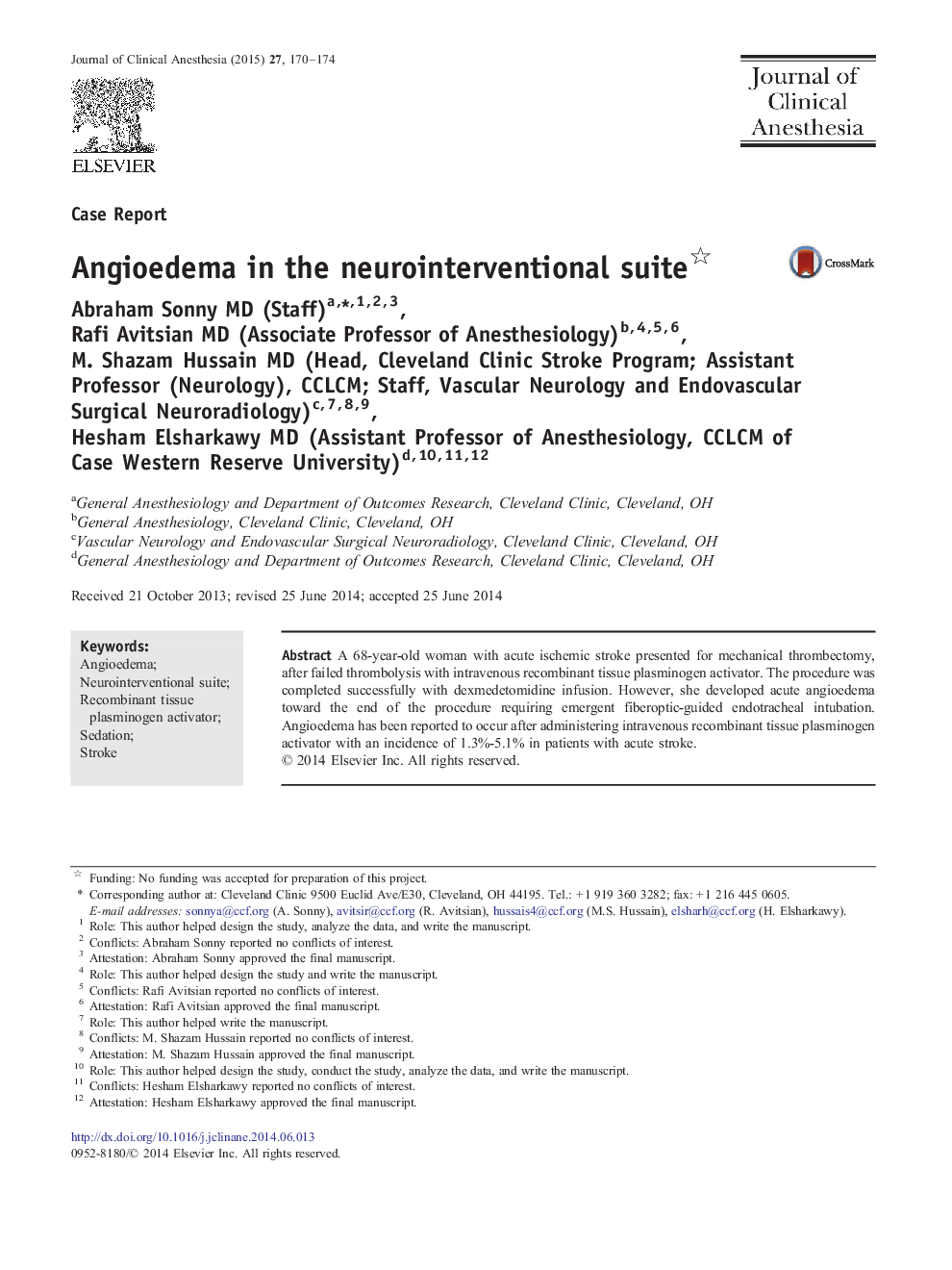| Article ID | Journal | Published Year | Pages | File Type |
|---|---|---|---|---|
| 2762427 | Journal of Clinical Anesthesia | 2015 | 5 Pages |
•Use of recombinant tissue-type plasminogen activator after stroke results in a 1%-5% incidence of angioedema.•Angioedema could complicate neurointerventional procedures during sedation.•Fiberoptic-guided tracheal intubation is preferred with developing angioedema.
A 68-year-old woman with acute ischemic stroke presented for mechanical thrombectomy, after failed thrombolysis with intravenous recombinant tissue plasminogen activator. The procedure was completed successfully with dexmedetomidine infusion. However, she developed acute angioedema toward the end of the procedure requiring emergent fiberoptic-guided endotracheal intubation. Angioedema has been reported to occur after administering intravenous recombinant tissue plasminogen activator with an incidence of 1.3%-5.1% in patients with acute stroke.
